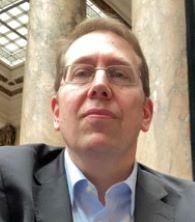Steven B. Nicoll
Professor
Areas of Expertise/Research
- Biomaterials
- Tissue Engineering
- Stem Cells
- Orthopaedics
Building
Steinman Hall
Office
T-431
Phone
212-650-6237

Steven B. Nicoll
Education
Post-Doc, Biomedical Engineering, Columbia University, New York, NY, 2002
Ph.D., Bioengineering, University of California, Berkeley and San Francisco, CA, 2000
B.S.E., Bioengineering, University of Pennsylvania, Philadelphia, PA, 1994
Research Interests
Professor Nicoll’s research program incorporates the principles of cell and molecular biology, materials science, and mechanical engineering toward the development of living tissue surrogates for connective tissue restoration. A prevailing theme in each of the major research thrusts is understanding how environmental stimuli and biomaterial substrates regulate the differentiation of progenitor cells (i.e., human dermal fibroblasts, bone-marrow derived mesenchymal stem cells) toward specialized connective tissue cell lineages, such as chondrocytes and osteoblasts. Recent efforts have focused on engineering injectable cellulose-based biomaterials for plastic surgery and orthopaedic applications.
Publications
Google Scholar link for Professor Nicoll's publications